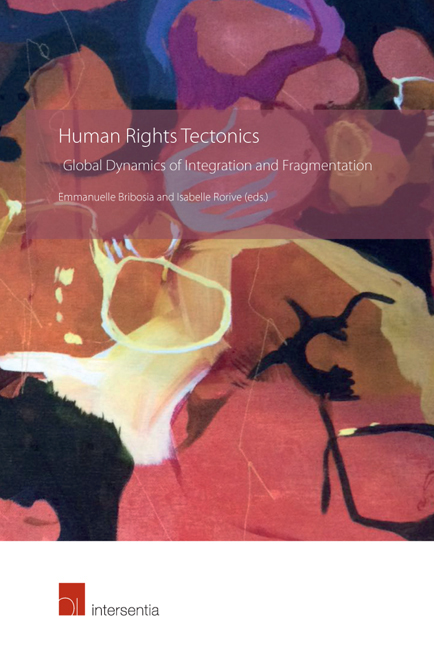Book contents
- Frontmatter
- Foreword
- Contents
- List of Cases
- List of Contributors
- Introduction to Human Rights Tectonics
- PART I PROMISES AND CHALLENGES OF AN INTEGRATED APPROACH TO HUMAN RIGHTS
- PART II HUMAN RIGHTS TECTONICS THROUGH AN ISSUE-BASED APPROACH
- Why a Global Approach to Non-Discrimination Law Matters: Struggling with the ‘Conscience’ of Companies
- Sexual and Reproductive Rights at the Crossroads: Intersectionality and the UN Treaty Monitoring Bodies
- The Integration of Cultural and Economic Rights by Regional Human Rights Courts
- The Use of External Instruments by the European Court of Human Rights: (Missed) Opportunities for the Rights of Persons with Disabilities
- PART III HUMAN RIGHTS DYNAMICS IN EUROPE
- About the Editors
Sexual and Reproductive Rights at the Crossroads: Intersectionality and the UN Treaty Monitoring Bodies
from PART II - HUMAN RIGHTS TECTONICS THROUGH AN ISSUE-BASED APPROACH
Published online by Cambridge University Press: 31 January 2019
- Frontmatter
- Foreword
- Contents
- List of Cases
- List of Contributors
- Introduction to Human Rights Tectonics
- PART I PROMISES AND CHALLENGES OF AN INTEGRATED APPROACH TO HUMAN RIGHTS
- PART II HUMAN RIGHTS TECTONICS THROUGH AN ISSUE-BASED APPROACH
- Why a Global Approach to Non-Discrimination Law Matters: Struggling with the ‘Conscience’ of Companies
- Sexual and Reproductive Rights at the Crossroads: Intersectionality and the UN Treaty Monitoring Bodies
- The Integration of Cultural and Economic Rights by Regional Human Rights Courts
- The Use of External Instruments by the European Court of Human Rights: (Missed) Opportunities for the Rights of Persons with Disabilities
- PART III HUMAN RIGHTS DYNAMICS IN EUROPE
- About the Editors
Summary
This chapter analyses selected examples of the United Nations (UN) treaty-monitoring bodies’ application of an intersectional lens to sexual and reproductive rights issues. While the concept of intersectionality has occupied centre stage in much of the gender and postcolonial studies literature produced since the 1980s, the use of intersectional perspectives by the international human rights mechanisms has a much more recent history.
Intersectionality is both a method of observation and an action-oriented form of practice. It aims to uncover and redress forms of privilege and oppression that remain hidden from view in the single attribute analyses of inequality traditionally used by international and national human rights monitoring mechanisms. The present chapter looks at the way in which the treaty-monitoring bodies are increasingly deploying the concept of intersectionality – both explicitly and implicitly – to address issues of sexual and reproductive rights.
The difficulties inherent in identifying a suitable comparator against whom the presence of discrimination or disadvantage can be assessed are highlighted. In some instances, the treaty bodies have failed to adequately address intersectional factors, such as belonging to an ethnic minority group or being a human rights defender, that have a direct bearing on the realisation of sexual and reproductive rights. In other situations, exemplified in the approach taken by the majority of the Human Rights Committee (HRC) in the Amanda Jane Mellet v Ireland case (2016),it is argued that the misuse of an intersectional comparator may potentially obscure, rather than illuminate, broader gendered power relations.
The chapter concludes with some reflections about the prospects and limitations of intersectional approaches to sexual and reproductive rights and the capacity of the UN human rights monitoring mechanisms to engage in the nuanced, radical and frequently contradictory analyses of inequalities and power relations that such approaches require.
THEORISING AND APPLYING INTERSECTIONAL METHODS
Intersectionality is a form of resistant knowledge developed to unsettle conventional mindsets, challenge oppressive power, think through the full architecture of structural inequalities and asymmetrical life opportunities, and seek a more just world.
Scholars and activists working within the frameworks of critical race feminism and postcolonial studies have long engaged with issues of intersectional oppression. These groups emphasise that gender, ethnicity, disability, age, socio-economic status and other identity characteristics are reflections of political, social and economic power constellations, which promote or limit an individual's enjoyment of rights and capabilities.
- Type
- Chapter
- Information
- Human Rights TectonicsGlobal Dynamics of Integration and Fragmentation, pp. 141 - 162Publisher: IntersentiaPrint publication year: 2018



